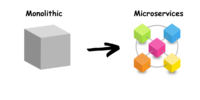Data science models are the backbone of informed decision-making in today’s digital landscape. However, deploying these models into real-world applications requires careful consideration and strategic planning. In this article, we’ll explore quick tips for deploying data science models effectively, ensuring they seamlessly integrate into operational environments.
Understand the Deployment Environment
Prior to deployment, gain a comprehensive understanding of the deployment environment. Consider factors such as hardware specifications, software dependencies, and potential constraints. This initial assessment sets the stage for a smoother integration process and helps anticipate any challenges that may arise.
Choose the Right Deployment Platform
Not all deployment platforms are created equal. Evaluate different deployment options, such as cloud services, on-premises solutions, or edge computing platforms. Choose the platform that aligns with your specific requirements, offering scalability, reliability, and performance tailored to your data science model’s needs.
Prioritize Model Monitoring and Management
Continuous monitoring is paramount for deployed data science models. Implement robust monitoring tools to track model performance, detect anomalies, and ensure that the model remains accurate over time. Effective model management includes version control and the ability to roll back to previous versions if issues arise.
Ensure Scalability for Growing Demands ⚙️
As usage of your deployed model grows, scalability becomes a critical factor. Design your deployment architecture to handle increased loads seamlessly. This may involve optimizing code, leveraging parallel processing, or utilizing auto-scaling features offered by cloud platforms to accommodate varying workloads.
Implement Robust Security Measures
Security is non-negotiable in data science deployment. Safeguard your models and the data they process by implementing robust security measures. This includes encryption, access controls, and regular security audits. Prioritize data privacy to build trust and ensure compliance with regulatory standards.
Facilitate Seamless Integration with APIs
Enable seamless integration with other applications by exposing your data science models through well-documented APIs (Application Programming Interfaces). APIs simplify the interaction between your model and external systems, fostering broader usability and promoting collaboration across different teams.
Plan for Model Updates and Retraining
Data science models are not static entities; they require updates and retraining to stay relevant. Plan for regular updates, taking into account new data sources, changes in the underlying environment, and advancements in model algorithms. Automate the update process to ensure efficiency and consistency.
Provide User-Friendly Documentation
Make deployment and usage of your data science model accessible to a broader audience by providing user-friendly documentation. Clearly document the deployment process, API endpoints, and any configuration settings. This empowers users and developers to work with your model effectively, reducing the learning curve.
Conclusion: Unleashing the Power of Data Science Models
Deploying data science models is a crucial step in translating insights into action. By understanding the deployment environment, choosing the right platform, prioritizing monitoring and management, ensuring scalability, implementing robust security, facilitating seamless integration, planning for updates, and providing user-friendly documentation, you can unlock the full potential of your data science models and contribute to data-driven decision-making in various domains.








